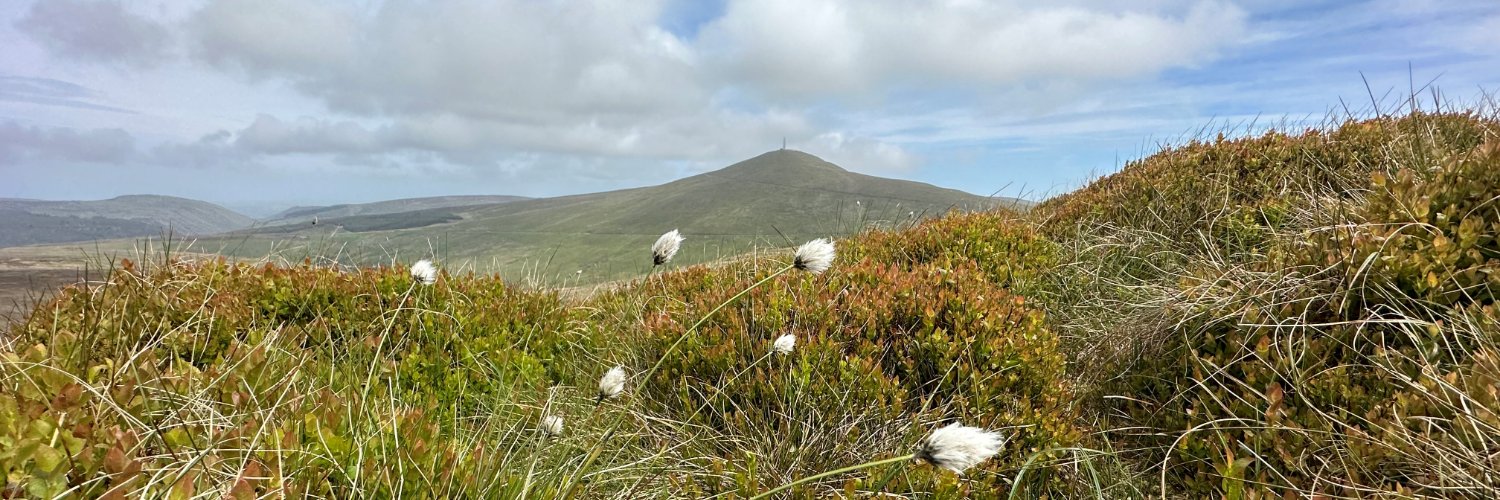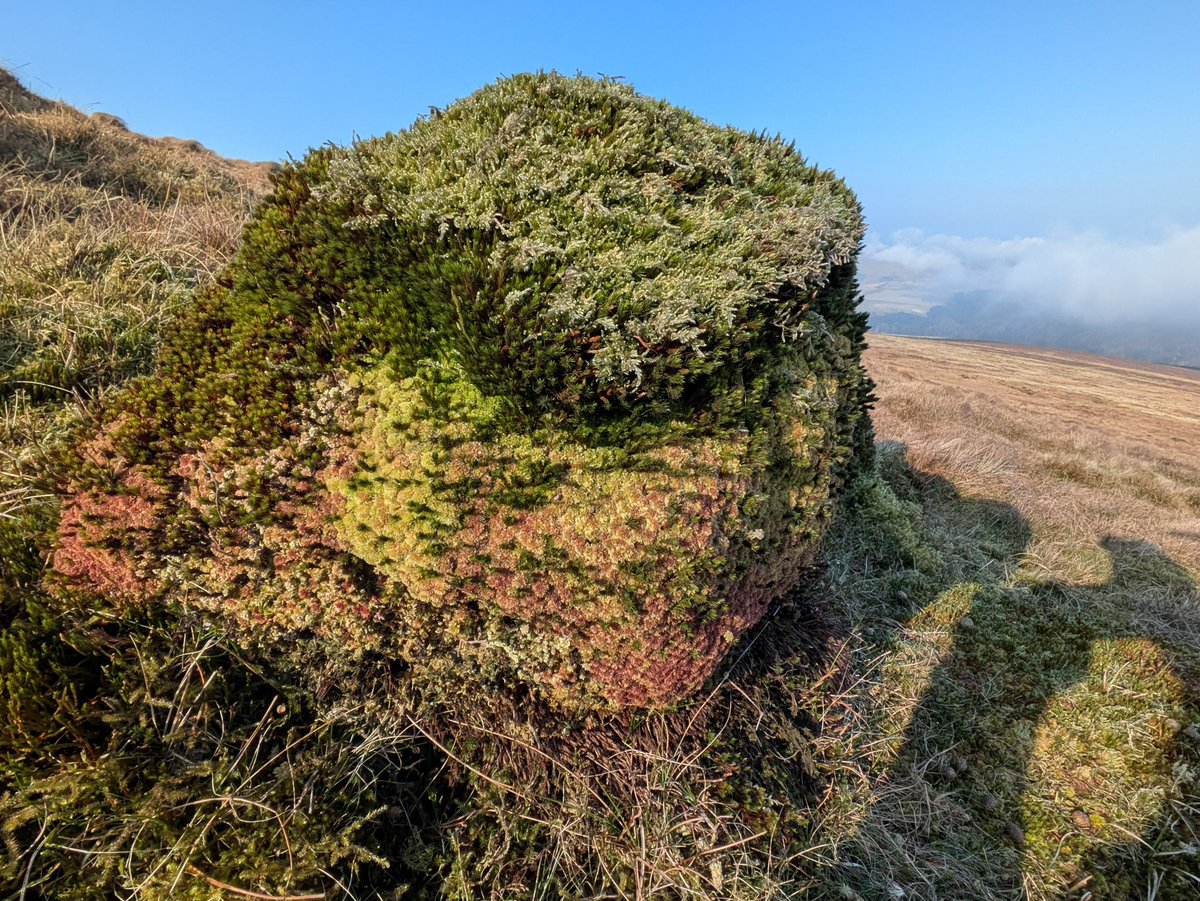
Manx Peat Partnership
@ManxPeat
We aim to protect and, where needed, restore peatlands across the Isle of Man through collaborative working.
We have a lovely new website 😍 Find out about our work at manxpeat.org

The damming of a drainage channel, step by step ☺️ These dams will raise the water table in the surrounding peat, keeping it nice and wet 💦 They also create shallow pools which will benefit wildlife 🐦🦟




Some really important work going on here! 👇 Our CoirMesh & CoirLogs being installed beautifully to restore essential peatlands. Did you know peatlands store twice as much carbon as all the worlds forests? Protecting them from erosion is crucial! 🌱 Great work 👏
We ordered great weather for our 'Power to the Peatlands' event this morning ☀️😊 The team managed to cover the bare peat with heather brash and coir netting, protecting it from the weather and helping vegetation to grow🌱
These unusual hummocks were found in an area with fairly short vegetation. They appear to be comprised of sphagnum and haircap moss, with a topping of heather and lichen. Several sphagnum species naturally form hummocks, but they don't normally look quite like this 🧐


We've started putting up signs at our #peatland restoration sites☺️ Check out these ones near Black Hut 👀 More will be installed over the next few weeks and you can click on the QR code to find out what's going on 💚


An abundance of berries and bees on Beinn-y-Phott today 🐝 Blaeberries and crowberries are out and the bumblebees are loving the cross-leaved heath 💜




This bog asphodel plant is tucked into a damp, sheltered area behind a coir log, which was previously bare #peat 😍 It's the only one at the moment, but the cottongrass and sphagnum are spreading and creating conditions suitable for other bog species to become established 😊🌿

Who doesn't love a sundew? 😍 These carnivorous plants are in flower at the moment, but you have to look closely, they're very small! Spikey yellow-sedge are also fruiting on our #peat restoration sites 😀



Many upland species are now in full summer mode, despite the weather not feeling particularly warm! Bell heather is in bloom, providing nectar for many invertebrates 🦋, blaeberries are out😋and so was an emperor moth caterpillar💚



Before and after photos are a great way of assessing how our work is going. This type of monitoring will continue over the next few years, but already we can see massive changes😀 The digger work on this site only started in February this year and just look at the difference now!




A carpet of sphagnum moss and marsh violet on one of our planned restoration sites 😍This site has some really nice wet habitat but also areas of degraded, eroding peat. To preserve the sphagnum (and prevent the digger getting stuck😉) the work on this site will be done by hand💪




We were joined at our Black Hut restoration site by John Moss of Manx Radio 😀 manxradio.com/news/isle-of-m…
What a glorious sight at our Black Hut restoration area 😍 The fluffy seed heads of common cottongrass are covering the coir netting in 'summer snow' 🌱This area of bare peat is starting to revegetate ☺️


The hills are loving this weather of sunshine and showers 😊 Shallow pools on one of our #peat restoration sites are full of sphagnum moss and the sundews are out, ready to catch any unsuspecting invertebrates 🦟🕷😋




Dog's sick slime mould 🤢found on Beinn-y-Phott last autumn🧐 Slime mould amoeba group together when their food is in short supply or when they want to reproduce. This blob is known as a plasmodium and acts like a single organism, moving around in search of food 🍔

Polytrichum (haircap moss) capsules are starting to emerge from their calyptrae, ready to release their spores 🌱These have caught the early morning moisture and are glinting in the sunlight ☺️


Is it a sign of too much time alone in the hills when you start seeing faces in the peat hags? Asking for a friend 😉

The sphagnum moss is loving this wet weather 💦💚 Small pools of water have been trapped behind coir logs, creating the perfect conditions for aquatic species. Hummock-forming species are poking through the coir netting, which provides shelter from extremes of weather ☀️🌧❄️


Heath milkwort is abundant on Mullagh Ouyr at the moment. These beautiful purple/blue flowers💠 are easy to miss, but look closely and you'll see them everywhere 🤩


The hills are alive with spring colours and birdsong at the moment 🐦Vibrant red blaeberry shoots, green fir clubmoss and fluffy white cottongrass 💚 This diversity of upland vegetation supports a number of rare bird species and is what makes our hills so special 😊




New shoots of blaeberry growing through coir netting 😍This net was installed on Mullagh Ouyr last year by a group of volunteers, and is already starting to blend in to the surrounding vegetation 🌱
